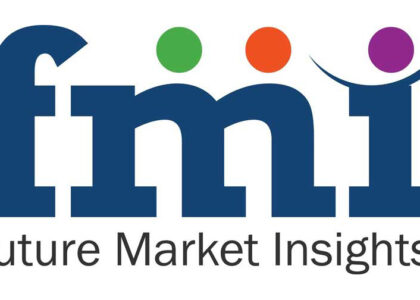The global business is anticipated to witness a considerable CAGR of 4.3% during the period of 2022 and 2029. Future Market Insights (FMI) has forecasted the Vulcanization Accelerators market to grow with a year on year growth of 3.8% in 2022 reaching a value of about US$ 1,708.1 Mn by 2022 end.
The latest study published by Future Market Insights (FMI) on the Vulcanization Accelerators Market incorporates the global industry analysis for 2014 – 2021 and market opportunity assessment for the forecast period of 2022 – 2029. The market study divulges decisive insights and offers exhaustive market analysis for the historical as well as forecast period. As per the market assessment in the report, the global vulcanization accelerators market is estimated to witness substantial growth due to growing demand from the tire industry.
The global vulcanization accelerators market was evaluated at ~US$ 1.4 Bn in 2021 and is anticipated to grow with 4.3% CAGR during the forecast period i.e., 2022 – 2029.
Apart from tires, rubber is also used in other automotive parts such as wiper blades, engine mounts, seals, hoses, and belts. Growing automotive production will elevate the manufacturing of automotive rubber parts and components. Thus, increasing the consumption vulcanization accelerators.
Rubber is used extensively in industrial products such as rubber belts, rubber buckets, rubber pads, rubber lining, rubber rollers, and rubber mats, among various other products. Apart from these, rubber finds key application in the manufacturing of medical products such as condoms, surgical gloves, stoppers, tubes, cushioning or supporting materials, breathing bags, implants, prosthetics and catheters, etc. Thus, growing rubber consumption in medical and industrial sectors is estimated to surge the demand for vulcanization accelerators.
Request a Report Sample @ https://www.futuremarketinsights.com/reports/sample/rep-gb-9956
East Asia to Represent Significant Opportunities for Manufacturers
Japan and China are few of the leading tire manufacturing countries. China is assessed to be a prominent tire producer. Presence of companies such as Yokohama Rubber Company and Bridgestone Corporation, makes Japan a substantial tire manufacturing country. In addition, China’s auto industry has witnessed significant growth in the recent years, leading to subsequent increase in the tire production. However, fluctuating raw material prices due to trade wars and oversupply of materials are affecting local manufacturers.
Besides, imposition of stringent regulations on tire exports from European countries and the U.S is expected to create further problems for tire manufacturers. However, East Asia is estimated to be a prominent market for vulcanization accelerators, due to increasing sales of passenger and commercial vehicles and rising demand for replacement tires.
Increasing population, improved standards of living, and increasing electric vehicle production will upsurge the demand for tires in East Asia, which will positively influence the growth of the vulcanization accelerators market. Further, increased emphasis on high quality medical and industrial rubber products is expected to propel the demand for vulcanization accelerators in the region.
Thiazoles and Sulfanamides to Remain Prominent Product Choices
The global vulcanization accelerators market has been categorized on the basis of product and application, along with regions.
- Based on product, primary accelerators – thiazoles and sulfonamides, are projected to remain prominent product choices in the upcoming years, and are expected to hold a significant share in the global vulcanization accelerators market throughout the forecast period.
- Although adoption in automotive industry continues to account for relatively high sales, growing application in industrial sector is likely to result in increased market share. Growing tire production and replacement activities as well as automotive industry growth are estimated to augment the vulcanization accelerators market growth.
Vulcanization Accelerators Market: Manufacturer Insights
According to the FMI analysis, the global vulcanization accelerators market is moderately consolidated with global and regional players playing key roles. The global vulcanization accelerators market report shades light on few of the key industry players in the global market. Some of the examples of key players in the market are Lanxess AG, Arkema, Eastman Chemical Company, Sumitomo Chemical Co., Ltd., NOCIL Limited, and Kumho Petrochemical, among others.
Request Customization (Get 20% Discount) @ https://www.futuremarketinsights.com/customization-available/rep-gb-9956
FMI study finds that the automotive industry slowdown in the past few months has changed the situation. However, government initiatives, tax cuts, and subsidies will continue to drive the growth of the automotive sector, and subsequently of the vulcanization accelerators market. Also, the increasing demand for vulcanized rubber in the manufacturing of industrial & medical rubber goods is expected to raise the demand for vulcanization accelerators.
Vulcanization Accelerators Market By Category
By Product Type:
- Thiozoles
- Sulfanamides
- Dithiocarbamates
- Thiuram
- Others
By Application:
- Automotive
- Industrial
- Medical
- Consumer Goods
By Region:
- North America
- Latin America
- Europe
- South Asia
- East Asia
- Oceania
- Middle East & Africa
Table of Content
1. Executive Summary
1.1. Global Market Outlook
1.2. Demand Side Trends
1.3. Supply Side Trends
1.4. Analysis and Recommendations
2. Market Overview
2.1. Market Taxonomy
2.2. Market Definition
2.3. Technology Roadmap
2.4. Selection Criteria for Vulcanization Accelerators
3. Key Market Trends
4. Key Success Factors
TOC continued…!
Related Links:
https://careero.mn.co/posts/32620963
https://waoop.com/read-blog/47652
https://adhipatialumni.com/blogs/69746/Abrasives-Market-Share-Size-Demand-Growth-Trends-by-2032
https://www.homify.co.uk/ideabooks/9263766/abrasives-market-share-size-demand-growth-trends-by-2032
About FMI
Future Market Insights (ESOMAR certified market research organization and a member of Greater New York Chamber of Commerce) provides in-depth insights into governing factors elevating the demand in the market. It discloses opportunities that will favor the market growth in various segments on the basis of Source, Application, Sales Channel and End Use over the next 10-years.
Contact Us:
Future Market Insights Inc.
Christiana Corporate, 200 Continental Drive,
Suite 401, Newark, Delaware – 19713, USA
T: +1-845-579-5705
For Sales Enquiries: sales@futuremarketinsights.com
Browse latest Market Reports: https://www.futuremarketinsights.com/reports
LinkedIn| Twitter| Blogs


